We often erect a mental wall between planting an orchard and planting a vegetable garden. Either you have neat rows of trees, or you have neat rows of vegetables.
Here’s an orchard:
And here is a vegetable garden:
The former is a long-term investment that takes years to pay off. The latter is a quick return with more fertilizing, weeding, and daily effort.
Of course, if you’re a bit more free-spirited, you might go for a food forest instead, with various trees and perennial vegetables together.
However, let’s go back to the common vegetable garden/orchard divide. Getting fruit in an orchard may take 3-6 years, but then you get yields that can last for generations. Vegetable gardens provide quick and abundant harvests, yet you have to plant again every year.
Yet you don’t have to choose between having an orchard or growing a garden. And if you grow both, you don’t have to plant them separately.
You can combine them, particularly in the early years of an orchard.
Thus far, we’ve had good luck incorporating orchards and vegetable gardens together, getting the quick yield of annuals with the long-term yields of trees.
In our Grocery Row Gardens last year, we managed to grow 163lbs of cucumbers, over 150lbs of sweet potatoes, 760lbs of watermelons, 18lbs of Jerusalem artichokes, 10lbs of okra and about 40lbs of potatoes in between our fruit trees.
The vining crops acted like ground covers through growing season, with cucumbers dominating in spring, then being surpassed by watermelons, and then finally the watermelons being supplanted by sweet potatoes into the fall.
Our trees gave us nothing in yields as this was our first year; however, we still got over 1,000lbs of food from the system!
If you have an orchard, why not plant fast-growing crops between your trees? This works especially well in young orchards where the trees haven’t blocked much of the light yet. By the time your trees get big and start producing bushels of fruit and nuts, you will have already harvested tons of food from the space. Think pumpkins, sweet potatoes, watermelons and other ramblers, which you can start on hills and let run. Or get more intense and plant potatoes, corn, or other crops in beds between the trees.
Just something to think about. Our little backyard orchard/vegetable Grocery Row Garden system is outlined in this handy little booklet.
Even if you don’t plant a Grocery Row Garden, you can really up your game by adding some annuals to your orchard or food forest, particularly in the early years of establishment.

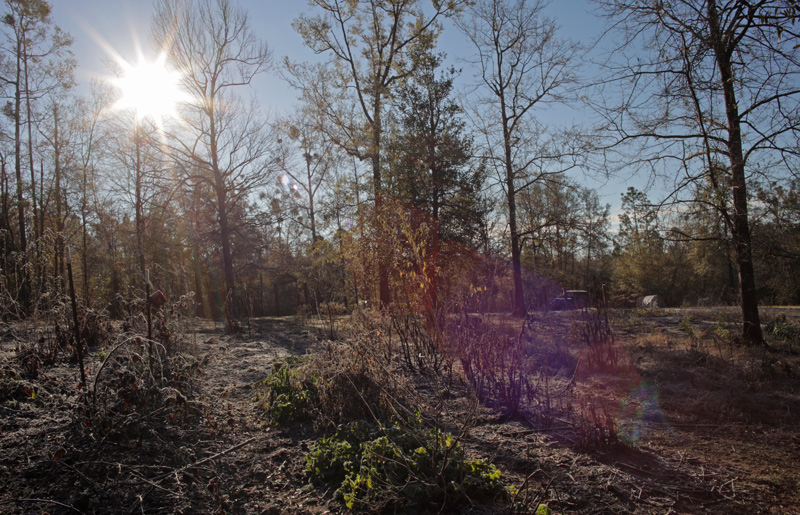
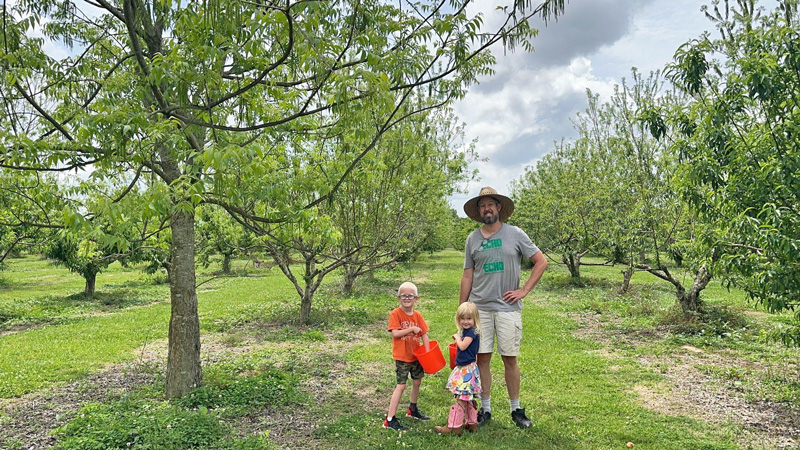
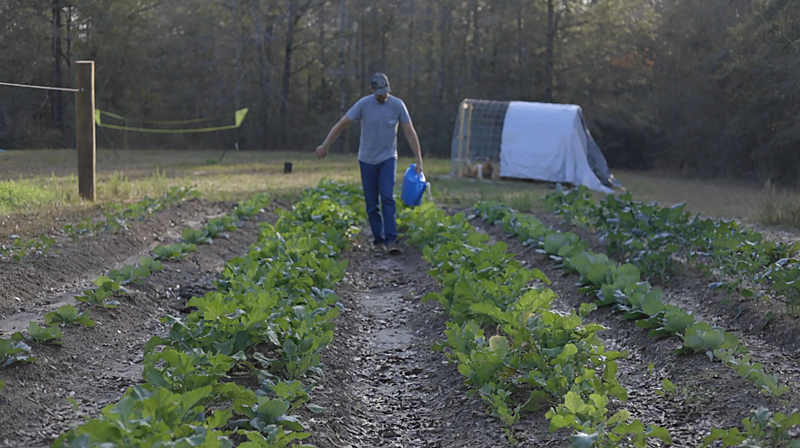
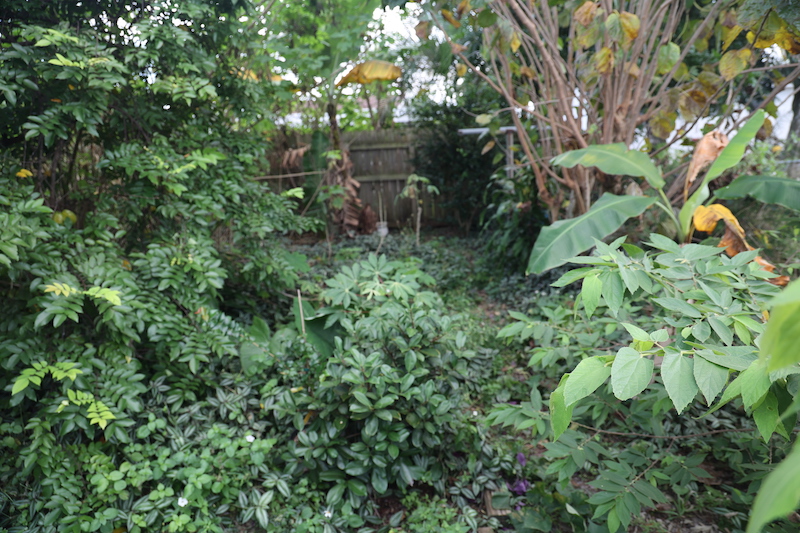
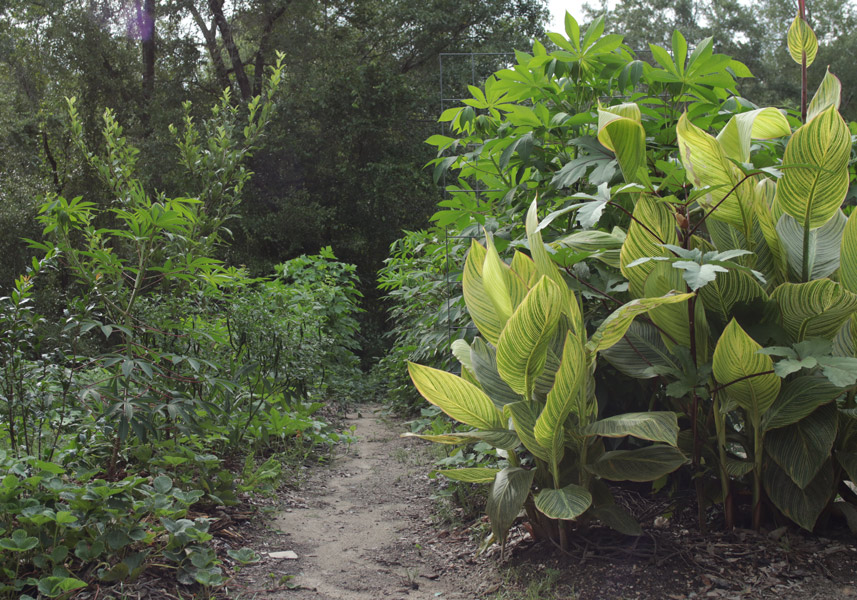
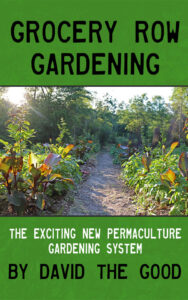
8 comments
The system of inter-cropping that David the Good has labelled “Grocery Row Gardens” takes advantage of areas of improved soil between fruit trees to grow crops while the trees are still “small”. Small is in quotes as it can vary by species and per local conditions. This system makes *excellent* use of improved soil areas that would otherwise be idle/non-productive.
David the Good has said in previous posts that the long term result of this system is a food forest, with shade eventually suppressing the growth of (most) annual crops. Pruning is suggested to keep tree size down, but it is very difficult to prune roots and plants that propagate via runners (blackberry, raspberry, etc.) may require significant labor to keep under control.
He has also, in another post, mentioned that tree roots often *quickly* invade compost piles/composted areas. My own gardening experience confirms this as well. A relevant point here: when you create areas of improved soil fertility: whether by a “standard” (hot) compost pile, sheet composting, heavy mulching over time, and/or the soil prep done for grocery row gardens: trees, whether nearby or planted in the grocery rows, will eventually invade these areas of improved soil fertility. This can happen quickly – a year or two in warm climates with adequate rainfall (may take longer in cold climates, dry climates). I have witnessed this in my own gardens, which are fed via sheet composting. Roots from an avocado and mango tree near the gardens have invaded the composted areas, reducing veggie production.
Now even though there is significant intrusion of tree roots, veggies can still be grown BUT:
veggies close to the trees may be reduced in size and yield
some veggies do poorly in this environment while others do OK
no-till (or minimum till) is a good idea to avoid disturbing tree roots
crops that require tilling for harvesting (tubers) might be non-optimal in this environment,
annual crop yields may drop over time as shade and root intrusion increases with fruit tree growth.
Note: no-till is suggested specifically to avoid disrupting tree feeder roots, and not from a naive, quasi-religious belief that “no-till” is always correct/best.
David has said in previous posts that grocery row gardens are experimental, and it will take time to identify which plant species grow well with the fruit trees. The subject species may also change over time as shade and tree root intrusion increases.
I am not writing this to discourage anyone from the grocery row system – I personally use areas of improved soil between (and near) fruit trees to grow tomatoes, watermelons, and other crops. But you should be aware that, over time, the improved soil areas will be extensively colonized with feeder roots from fruit trees, and these roots should be protected and treated with respect.
This is a good summary. One point is that the heavy pruning of trees above can reduce roots below, according to current accepted knowledge.
Im on year two of my grocery row garden NWFL. (Pine and yaupon holley overgrown forest). Im continuing to amend my rows and now I have black soil in the rows where it used to be hard packed clay that resemembled a hard packed rock driveway.
Im waiting for the last frost of the season to transplant my annuals from the greenhouse (and living room).
I re-read your book after watching the grocery row film on youtube and i noticed i did not alternate my trees diagonally. I went with 12 foot spacings in the row and 4 foot rows and 4 foot pathways.
Ill keep you updated on the progress, i dont want to transplant the trees. I am going to prune heavily and train the branches more of an “X” pattern so they dont intersect and play with different branch heights. This probably could have been avoided if i can read better but that’s my fault. Think I should transplant or can i get away with my plan to prune and train? Thank you.
If you prune the trees to expand sideways down the rows, instead of into the paths, you should do fine.
However, this is you last chance to reset before they get too big to move, if you are worried about it. The extra space is pleasant to have.
Ok. I’ll take a look at young trees i put in recently and see if they can be moved. Some trees are blooming this year after having them for 4 years (transplanted last year from suburban back yard to grocery row garden on new homestead).
I’ll email you some pics once things get growing… feeling good about it this year.
I’m on an island off the Georgia coast – Zone 9a and sandy so exactly like NE Florida except maybe a little hotter. Where I can garden, I’m not allowed to plant trees. Would I do your grocery row garden exactly as shown sans trees, or should I make some other adjustment?
No trees.
In that case, I would plant perennial shrubs instead. If that is not permissable, just mix up taller and shorter plants of all types. I would also make the paths only 2′ wide, instead of 3′, since you don’t need the extra orchard spacing.
Comments are closed.